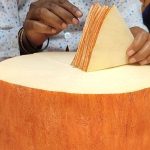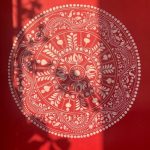The Charaka Samhita also called the compendium of Charaka, is a comprehensive Sanskrit text on ancient Indian medicines composed by Rishi Charaka.
He was believed to be a practitioner of the traditional system of Indian medicine called Ayurveda, which probably flourished during the pre-second century CE. Ancient Indian medicine studies indicate that the original text was composed several centuries earlier by a legendary sage named Agnivesha, a student of Punarvasu Atreya, one of the six great Ayurvedic scholars.
Each of the disciples went on to compose their own Samhitas that integrated ideas from Atreya’s School of thought, and in addition, they included their own understanding of the subject.
Amongst those, Agnivesha Samhitha specifically stated in-depth content and later refined and annotated by Rishi Charaka.
Rishi Charaka divided the treaties into eight parts, namely:
- Sutra,
- Nidhana,
- Vimana,
- Sarira,
- Endriya,
- Chikitsha,
- Kalpa,
- Siddha
Each of these parts consists of multi chapters making it eight books and one hundred twenty chapters as a whole. So, these ancient texts give in-depth information associated with Ancient theories on the human body. It includes etiology, symptomology, and therapeutics for various ailments.
In Charaka Samhita, Charaka Rishi elaborately explained subjects like anatomy and human body malfunction according to the Tridosha (the three fundamental bodily humourous) – Vata, Pitta, and Kapha.
Moreover, it also included sections on the importance of diet, hygiene, and prevention, including the logic and philosophy behind the Indian medicinal system.
Furthermore, it explains well how teamwork between the physician, nurse, and patient is necessary for the quick and proper recovery of the patient. Along with the Sushruta Samhita, Charaka Samhita also has contributed to Ayurveda as one of the two foundational ancient texts of this field that managed to survive.
Feature Image Credit: Pinterest.




